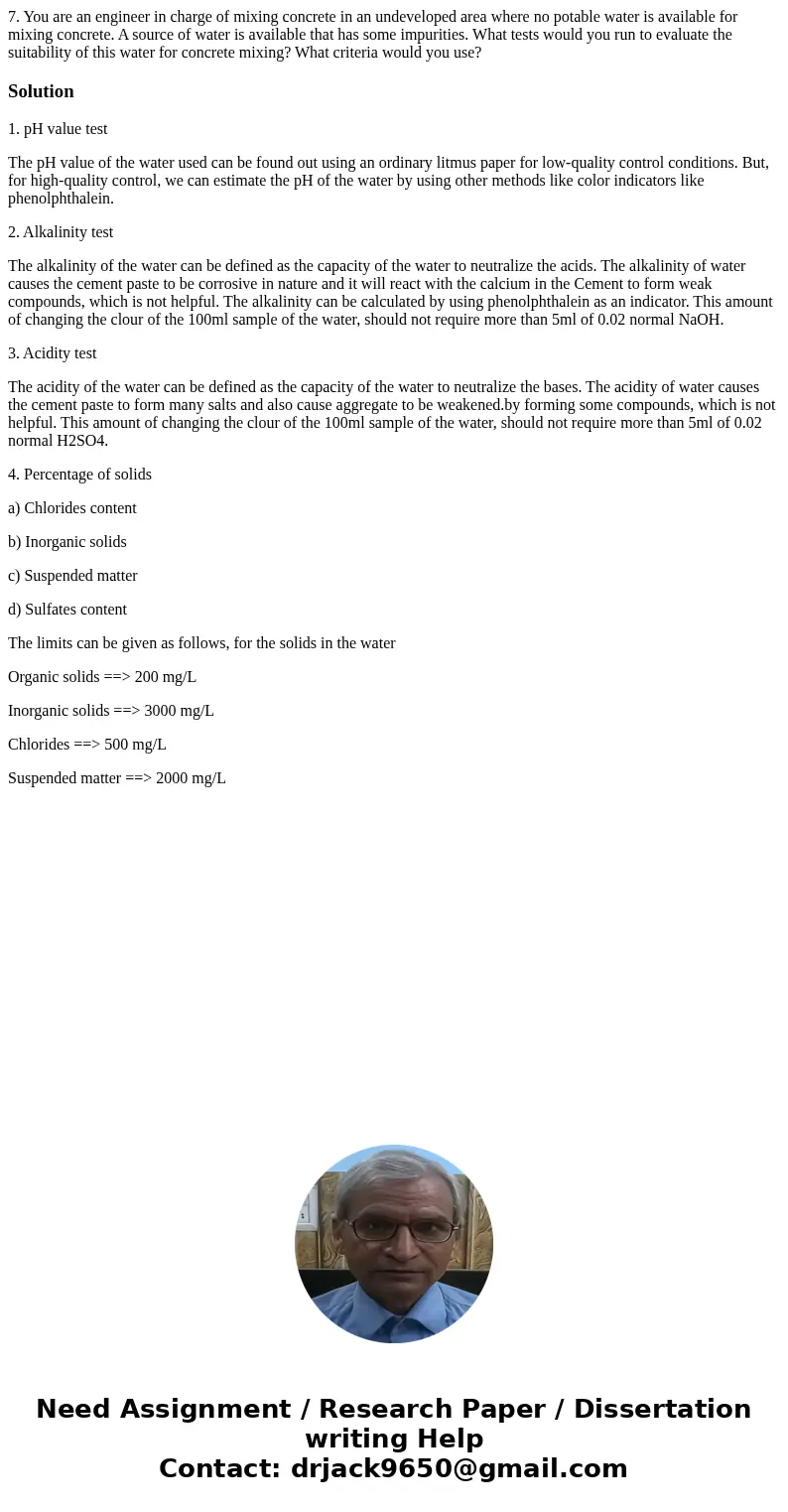7 You are an engineer in charge of mixing concrete in an und
Solution
1. pH value test
The pH value of the water used can be found out using an ordinary litmus paper for low-quality control conditions. But, for high-quality control, we can estimate the pH of the water by using other methods like color indicators like phenolphthalein.
2. Alkalinity test
The alkalinity of the water can be defined as the capacity of the water to neutralize the acids. The alkalinity of water causes the cement paste to be corrosive in nature and it will react with the calcium in the Cement to form weak compounds, which is not helpful. The alkalinity can be calculated by using phenolphthalein as an indicator. This amount of changing the clour of the 100ml sample of the water, should not require more than 5ml of 0.02 normal NaOH.
3. Acidity test
The acidity of the water can be defined as the capacity of the water to neutralize the bases. The acidity of water causes the cement paste to form many salts and also cause aggregate to be weakened.by forming some compounds, which is not helpful. This amount of changing the clour of the 100ml sample of the water, should not require more than 5ml of 0.02 normal H2SO4.
4. Percentage of solids
a) Chlorides content
b) Inorganic solids
c) Suspended matter
d) Sulfates content
The limits can be given as follows, for the solids in the water
Organic solids ==> 200 mg/L
Inorganic solids ==> 3000 mg/L
Chlorides ==> 500 mg/L
Suspended matter ==> 2000 mg/L

 Homework Sourse
Homework Sourse